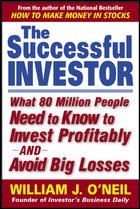The rule of three
However, to simplify things, I have devised a “rule of 3” strategy in allocating my funds. Instead of focusing on the number of stocks, I would group my stocks into 3 categories depending on its risk profile and expected return. So let me go through these categories and do an analogy with some popular game shows on TV. Anyway, stockmarket is one big game in itself.
Patient money – This is similar to the game show “Who wants to be a Millionaire”. You need a lot of brainpower in choosing the right stock (or the right answer). Just like the said game show, once you hit the right stock (or the right answer), you will most likely hit the jackpot. My minimum upside target for stocks that fall under this group is 100%. However, investors have to be patient and be willing to hold the stock for at least 2 years. Mostly, these are out of favored stocks that have compelling turnaround story to boot. They may not necessarily be losing companies. Here, we are looking for stocks with “paradigm shift” in its fundamentals. Stocks that I bought under this category are Philex Mining (PX-P3.80), Republic Cement (RCM – P5.10), Philippine Stock Exchange (PSE - P445.0) and PCI Leasing (PCIL – P1.60).
Long term money – Like the “Game KNB” game show of ABS-CBN (ABSP – P22.25), you need some brainpower in choosing the right stock (or the right answer) but the odds of hitting the correct answer is much better compared to my earlier analogy. My minimum upside target for stocks in this group is 25%. Usually, you have to wait at least 6 – 8 months to see the full potential of your bet. Mostly, these are stocks that are in vogue. The best indicator is to watch for a significant increase in volume activity of the sector leader. Like in 2006, the best performers in the PSEi were banking stocks led by Bank P.I. (BPI – P71.0 that rose from P40.0 to P70.0 within the year. So what is good for BPI is good for the banking sector. So there is a strong chance for other bank stocks to follow suit. The movement of the sector leader is telling you to overweight the sector. As I always mention, the writings are on the wall. For 2007, the vogue sector is obviously the energy/utility sector. The turnaround of Meralco-B (MERB – P70.50) and the strong showing of PNOC Energy Dev’t. Corp. (EDC – P4.95) IPO signal that money flow is biased towards this sector.
Speculative money – It’s simply deal or no deal. Similar to the namesake of the game show, this is purely speculative play. You need very minimal brainpower and all you have to do is to observe the money flow of the stock (and a lot of luck). The most important rule here is to sell when the news is out – no matter what “whispers” you hear. Take for instance GEO Grace (GEO – P0.80). The stock rose from P.0675 to P0.80 in 2006. When the story was announced, the stock moved within a narrow range of P0.70 to P0.80. Had you held on to GEO since the announcement, you would have missed out on other opportunities in the market. Once the news is out, the speculation is over and it is time to say “deal”.
So, the next question is how much to allocate per group? Again, there is no hard and fast rule. Currently I am maintaining a 25%-50%-25% allocation. I have allotted equal weight to speculative and patient money since the liquidity of the market is quite good. In case there is a reversal, first to go will be all my speculative bets.
In the end, it is not how much money you make but how you manage your risk that matters. That’s how you play any game.

